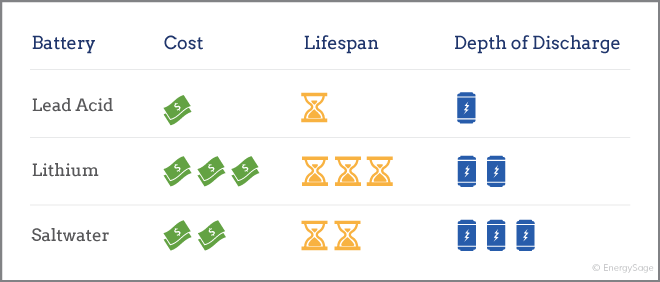Batteries used in household energy storage are usually made from one of three chemical components: lead-acid, lithium-ion and brine. In most cases, lead-acid batteries are the best choice for solar panel systems, although other battery types can be more affordable.
1 Lead acid Battery
Lead-acid batteries are a tried-and-tested technology that has been used in off-grid energy systems for decades. They have a relatively short life expectancy and a low DOD compared to other battery types, and are one of the cheapest options currently on the market for home energy storage. Lead acid may be a good choice for homeowners who want to power off and need to install a large amount of energy storage.
2 Lithium ion Battery
Most new home energy storage technologies, such as lithium-ion chemistry, take some form. Lithium-ion batteries are lighter and more compact than lead-acid batteries. Compared with lead-acid batteries, their DOD longer life and longer life expectancy. However, lithium-ion batteries are more expensive than lead-acid batteries.
3 Saltwater Battery
New home energy storage industry is salt water batteries. Unlike other home energy storage options, brine batteries do not contain heavy metals and rely instead on brine electrolytes. Although batteries using heavy metals (including lead-acid batteries and lithium-ion batteries) require special handling, the saltwater cells can be easily recycled. However, as a new technology, salt water batteries are relatively untested. In 2017, Aquion, a manufacturer of home solar cells, applied for bankruptcy.


 Monday -Sunday: 8:00 - 24:00
Monday -Sunday: 8:00 - 24:00 No.13 Shang Zhen East RD., Taihe Town Baiyun Area, Guangzhou China
No.13 Shang Zhen East RD., Taihe Town Baiyun Area, Guangzhou China info@futuregreenbattery.com
info@futuregreenbattery.com


